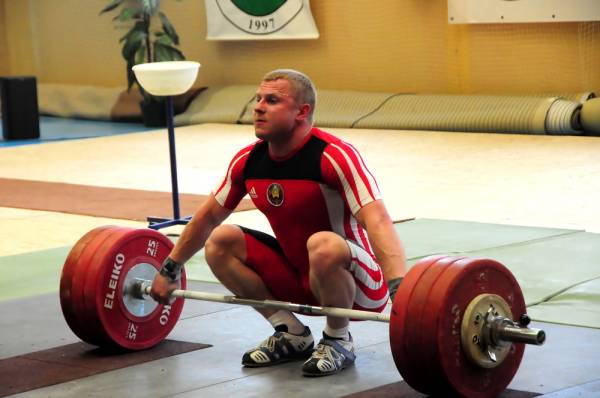When I see lifters competing in a meet, I and other experienced coaches can easily determine the appropriateness of their trainings and the expertise of their coaches. I can see common features of the technique of a team’s lifters. I can see whether a certain phase of a given lift is especially strong or weak. I can determine whether or not lifters are competing in the proper bodyweight class. Many things about the coaching and training become obvious in a competition.
One item that is rather obvious is the ratio of the snatch to the clean and jerk. If an athlete is mature, and is lifting in the appropriate bodyweight class for his or her height, proper training is reflected by this ratio. For many years, the top international lifters had best snatch figures that were within the range of 78 to 82% of the clean and jerk. With the advent of heightened drug testing protocols at the international level, that range is likely to expand upwards to about 84%, as the use of performance enhancing drugs is more necessary to improve the results of the clean and jerk.
So when I see a lifter who has been competing for some time, is at the appropriate bodyweight for his or her height and the technique is sound, but the snatch figure is below or above the aforementioned range, I know that the training needs some adjustment.
How is the training to be adjusted? The key figure that must be calculated is the average absolute intensity. This number is determined by taking the average weight of each repetition performed in the training over an extended period.
I have a twenty-week training program I wrote for my lifters that worked exceptionally well through several meets. I set up the program for a lifter who wanted to snatch 130 kg and clean and jerk 160 kg at the end of the cycle. For each exercise I multiplied the amount of weight used by the number of repetitions and added all these figures together.
This lifter totaled 910,945 kg over twenty weeks. He performed 7,782 repetitions for an average of 117.1 kg per repetition. At the end of the cycle he did snatch 130 and jerked 160. 130 divided by 160 equals 81.25%, which is comfortably within the 78 to 82% range, so this average figure of 117.1 is a valid one.
If the results were, for example, a 120 snatch and 160 clean and jerk the quotient would have been 75%, which is below the optimal range. In that case the training would need to be restructured so that the average weight is less than 117.1 kg.
 Another way to look at it when projecting ahead is to calculate what is called the K-value. In this calculation we use the same absolute average intensity and compare it to the total lifted at the end of the cycle. In the previous example if we take the 117.1 average absolute intensity and divide it by the total of 290 (130 + 160), the quotient x 100 is equal to 40.5. Empirical studies of the best training programs show this quotient should be in the range of 38 to 42, so this absolute average intensity is an appropriate one.
Another way to look at it when projecting ahead is to calculate what is called the K-value. In this calculation we use the same absolute average intensity and compare it to the total lifted at the end of the cycle. In the previous example if we take the 117.1 average absolute intensity and divide it by the total of 290 (130 + 160), the quotient x 100 is equal to 40.5. Empirical studies of the best training programs show this quotient should be in the range of 38 to 42, so this absolute average intensity is an appropriate one.
By using the ratio of the snatch to the clean and jerk and the absolute average intensity, it is possible to determine whether or not the training is balanced and will continue to lead toward ongoing progress. Some of you might think that this is a lot of work, and it is, but this is the type of work a coach must perform in order to get an athlete up to championship levels.
For those of you who are just getting started, the ratio of 78 to 84% is a good place to start and use as a monitoring device for your own training program planning. If your athlete’s number is too far below this range, the average training weight must be reduced. If it’s above this range, the average training weight needs to be raised.






